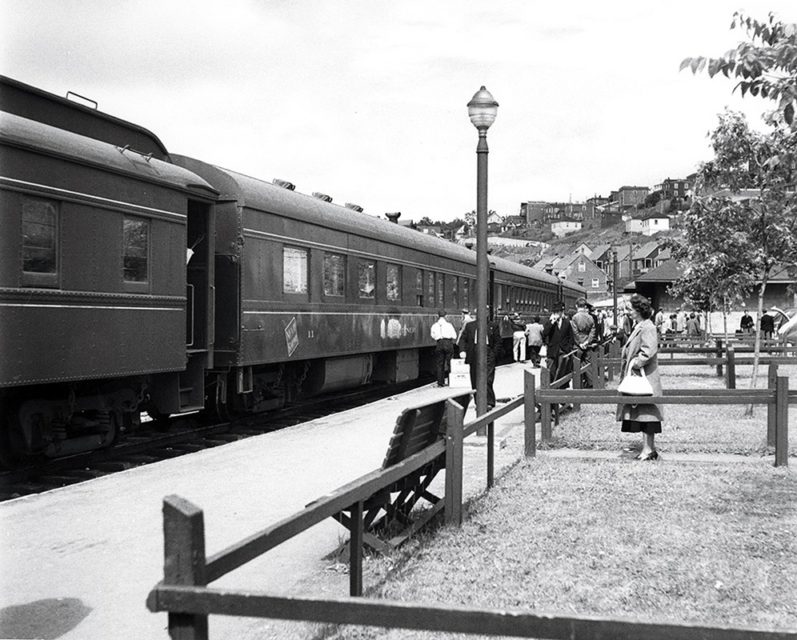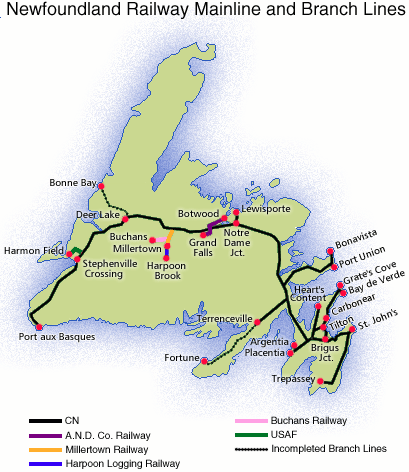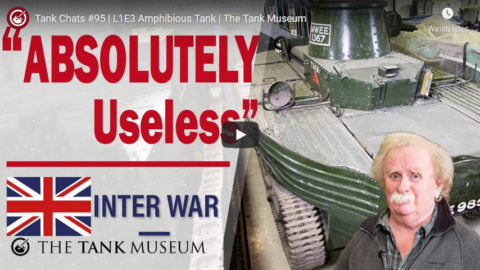Rex Krueger
Published 17 Feb 2021From adjusting to gripping to taking your first shavings, learn all about this historical tool.
More video and exclusive content: http://www.patreon.com/rexkrueger
Build your own Jointer Plane: https://youtu.be/DeWrLfOnyhs
Get the plans: https://www.rexkrueger.com/store/plan…
Build your own Sharpening Jig: https://youtu.be/EmyW8nFDLr4Tools/Materials for Sharpening (affiliate):
Norton Two-Sided Crystolon Stone: https://amzn.to/33eEfVl
Dan’s Whetstone Arkansas Fine Stone: https://amzn.to/3gkbk5T (These went up in price a little).
Green polishing compound: https://amzn.to/3i9t7xx
3-in-1 Oil: https://amzn.to/3gjBrdx
Honing guide (for grinding): https://amzn.to/2DcaslJ
Kreg Marking Jig (The blue thing I use to set angles): https://amzn.to/2DrB2qA
Super 77 Spray Adhesive: https://amzn.to/3fiSbjMSign up for Fabrication First, my FREE newsletter: http://eepurl.com/gRhEVT
Wood Work for Humans Tool List (affiliate):
*Cutting*
Gyokucho Ryoba Saw: https://amzn.to/2Z5Wmda
Dewalt Panel Saw: https://amzn.to/2HJqGmO
Suizan Dozuki Handsaw: https://amzn.to/3abRyXB
(Winner of the affordable dovetail-saw shootout.)
Spear and Jackson Tenon Saw: https://amzn.to/2zykhs6
(Needs tune-up to work well.)
Crown Tenon Saw: https://amzn.to/3l89Dut
(Works out of the box)
Carving Knife: https://amzn.to/2DkbsnM
Narex True Imperial Chisels: https://amzn.to/2EX4xls
(My favorite affordable new chisels.)
Blue-Handled Marples Chisels: https://amzn.to/2tVJARY
(I use these to make the DIY specialty planes, but I also like them for general work.)*Sharpening*
Honing Guide: https://amzn.to/2TaJEZM
Norton Coarse/Fine Oil Stone: https://amzn.to/36seh2m
Natural Arkansas Fine Oil Stone: https://amzn.to/3irDQmq
Green buffing compound: https://amzn.to/2XuUBE2*Marking and Measuring*
Stockman Knife: https://amzn.to/2Pp4bWP
(For marking and the built-in awl).
Speed Square: https://amzn.to/3gSi6jK
Stanley Marking Knife: https://amzn.to/2Ewrxo3
(Excellent, inexpensive marking knife.)
Blue Kreg measuring jig: https://amzn.to/2QTnKYd
Round-head Protractor: https://amzn.to/37fJ6oz*Drilling*
Forstner Bits: https://amzn.to/3jpBgPl
Spade Bits: https://amzn.to/2U5kvML*Work-Holding*
Orange F Clamps: https://amzn.to/2u3tp4X
Screw Clamp: https://amzn.to/3gCa5i8Get my woodturning book: http://www.rexkrueger.com/book
Follow me on Instagram: @rexkrueger
February 18, 2021
Choosing and Using Wooden Planes: A Complete Guide
Fallen Flag — The Newfoundland Railway

Newfoundland played a pivotal role in World War II during the Battle of the Atlantic and as a staging point for ship convoys and aircraft movements. Construction of Allied bases and the associated movement of personnel resulted in a railway traffic surge. A British and Canadian airfield grew near the main line at Gander, and the United States also exploited Newfoundland’s relative proximity to Europe. The two largest American installations were a naval base at Argentia — site of the 1941 shipboard meeting between President Roosevelt and Prime Minister Churchill — and Harmon Field, an Air Force base on the west coast at Stephenville. Rail traffic was a barometer of wartime pressures; between 1941 and 1943, NR’s passenger count rose from 223,000 to 500,000; freight tonnage also doubled. So important was the line to American military interests that the U.S. government allocated $2 million of “lend-lease” funds for locomotive and car construction.
Newfoundland Railway’s Overland Limited (a.k.a. the “Newfie Bullet”) calls at Corner Brook in 1948, the year before CN took over.
Canadian National photo via Classic TrainsAlthough the war brought profits and a revitalized equipment roster, the railway was not immune from the conflict’s brutality. On October 14, 1942, the Port aux Basques–North Sydney (N.S.) ferry Caribou was torpedoed and sunk by a German submarine. Of 237 passengers and crew on board, 136 perished.
Canadian National control
Newfoundland’s 1949 entry into Canada saw responsibility for much of the transport infrastructure assumed by the Canadian government, whose Canadian National Railways was charged with the management and operation of the railway, as well as coastal steamship services and the ferry link to Nova Scotia. The federal government agreed to subsidize the operations. Despite wartime profits and some postwar rebounds, though, the railway had been and would continue to be a chronic money-loser.
Newfoundland Railway was exclusively steam-powered for all but the final seven months of its pre-Confederation existence, as GE 47-ton center-cab diesels 5000–5002 arrived in August 1948. The last new NR locomotives were class R-2-d Mikados 324–329, built by Montreal and delivered just weeks before Confederation. They became the youngest steam locomotives, by five years, on the entire CNR. In all, four 4-6-0s, a 2-8-0, 10 4-6-2s, and 30 2-8-2s were conveyed to CN.
[…]
Well into the 1960s, the railway provided the only land link spanning Newfoundland. When the first road across the island opened as part of the Trans-Canada Highway in late 1965, it triggered an irreversible shift of traffic off the railway. In the highway’s first 15 years, the percentage of island freight handled by train dropped by more than half. More than 24 hours — double the road time — was required for the St. John’s–Port aux Basques rail trip, and that was if the trains ran on time, a spotty prospect especially in winter.
Passengers benefitted from CN’s continued investment in rolling stock, although the non-air-conditioned fleet couldn’t provide mainland comfort levels. The principal pre-Confederation passenger train was the overnight Overland Limited. CN renamed it Caribou in 1950, a fitting tribute to the ferry lost in 1942. To most folks, though, the train was known from the war onward as the “Newfie Bullet,” a wry reference to its leisurely schedule (daily in summer, triweekly the rest of the year). Although CN buses replaced the “Bullet” in July 1969, mixed trains kept serving isolated mainline points and the Carbonear, Bonavista, and Argentia branches.
From the Wikipedia entry on the post-abandonment fate of the line:
The former Newfoundland Railway station in St. John’s now hosts the Railway Coastal Museum. Numerous towns across the island have preserved railway equipment on display.
With few exceptions, the roadbed now forms the T’Railway Provincial Park rail trail. Until 2005, the Trinity Loop Amusement Park operated a miniature train, one of the few remaining places on Newfoundland with tracks still in place. The park closed down and was abandoned in 2005 due to lack of interest. Since then, all of the buildings have been heavily vandalized and Hurricane Igor washed away part of the park, including a large section of the rail bed. Local railway fans have been pushing government to retain the park as an historic site but officials have expressed little interest.
Some rolling stock was converted to a narrower gauge of 914 mm (3 ft) and sold to the White Pass & Yukon Route (WP&YR) railway, which reopened for service in 1988. Gravel cars used by WP&YR are still painted in CN orange; unconfirmed information indicates that some Newfoundland passenger cars were converted into passenger cars of vintage appearance for WP&YR.
Tank Chats #95 | L1E3 Amphibious Tank | The Tank Museum
The Tank Museum
Published 21 Feb 2020Here David Fletcher examines the Vickers-Carden-Loyd L1E3 Amphibious Tank. Produced in the 1930s, the L1E3 was a pre-WW2 experimental tank which never entered service with the British Army.
Support the work of The Tank Museum on Patreon: ► https://www.patreon.com/tankmuseum
Visit The Tank Museum SHOP: ► tankmuseumshop.org
Twitter: ► https://twitter.com/TankMuseum
Instagram: ► https://www.instagram.com/tankmuseum/
Tiger Tank Blog: ► http://blog.tiger-tank.com/
Tank 100 First World War Centenary Blog: ► http://tank100.com/
#tankmuseum #tanks
QotD: The “European Project”
Whatever else the European project was meant to be, it was never meant to be very democratic. Its deus ex machina, Jean Monnet, was quite clear abut this: the plebe was neither intelligent or informed enough to decide its own fate, at least as regards high politics. It would be dishonest to say that such thoughts never run through the heads of the more intelligent sector of the population in respect of the less intelligent; you have only to walk down the street to see that the voice of the people is hardly that of God. How many people, for example, know what the interest rate should be (assuming, that is, that there is a correct answer), or even what factors should be taken into account when assessing it? But few highly intelligent people would put their night thoughts into practice, and simply say, “We should rule because we are the most intelligent and know best.”
Theodore Dalrymple, “European Empire, Fractured”, Law & Liberty, 2020-11-10.







